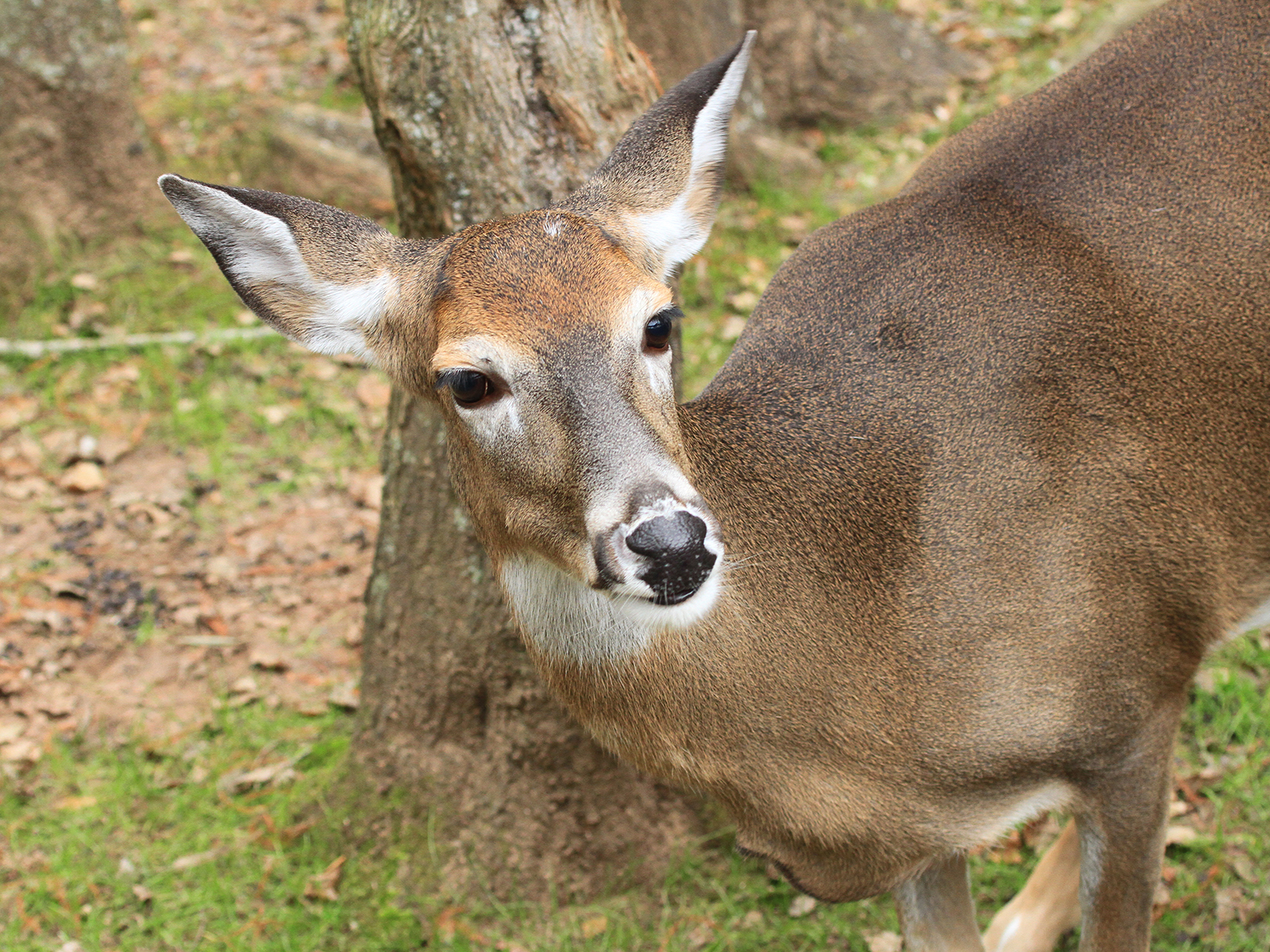White-tailed Deer
Odocoileus virginianus
Class
Mammalia
Order
Artiodactyla
Family
Cervidae
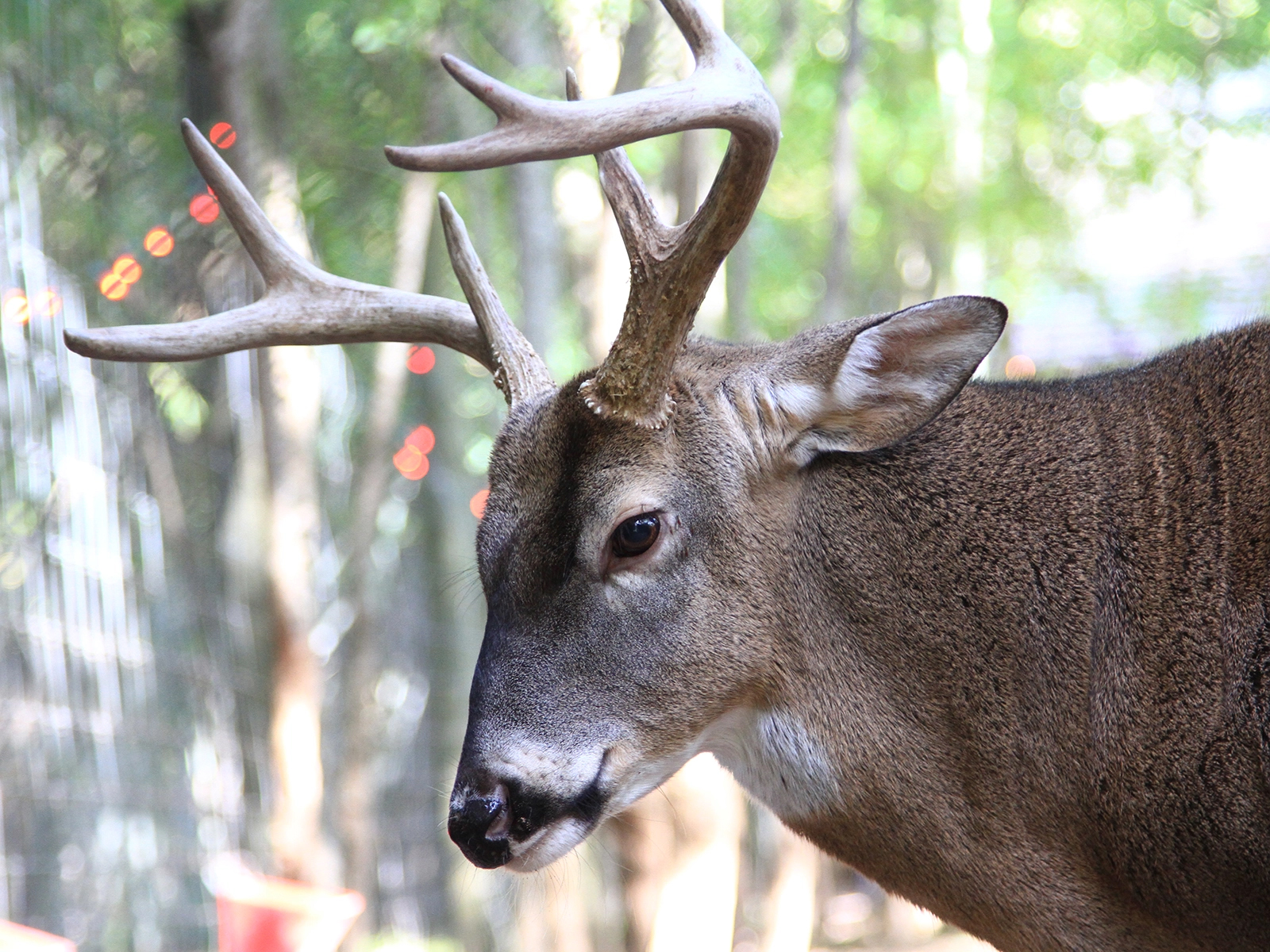
Mammalia
Artiodactyla
Cervidae
Southern Canada to South America
Male Length: 4 - 5 ft
Male Height: 34 - 40 in(at shoulder)
Male Weight: 125 - 175 lbs
Prefer open forests bordering old fields or natural meadows
1 - 2 fawns
Gestation: 6.5 - 7 months
Leaves, grasses, twigs, brush, vines, fruits, berries, acorns, fungi
Least Concern
When alarmed, they wag their tail and display the white underside.
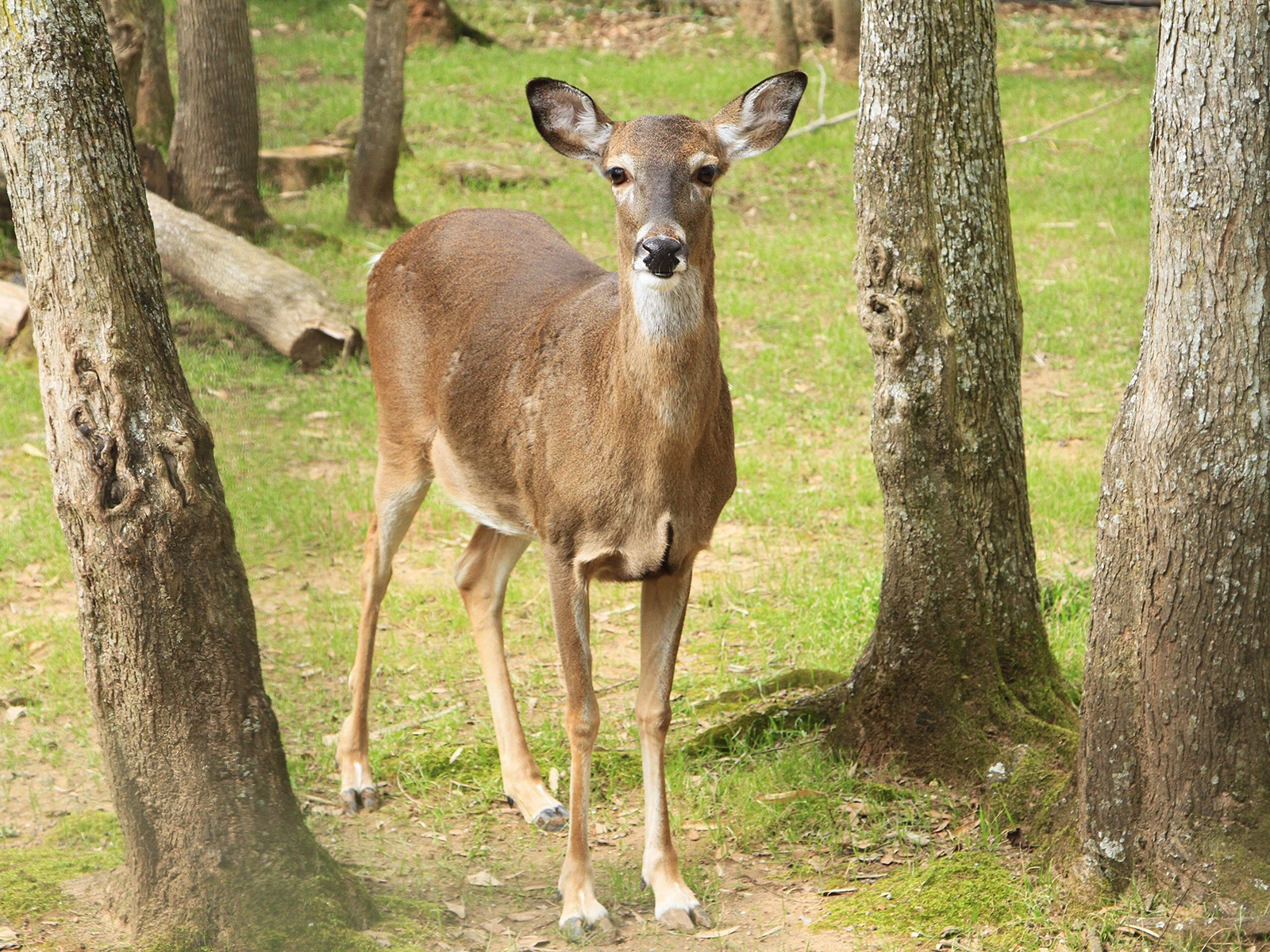
White-tailed deer can run up to 28 mph and are strong swimmers.
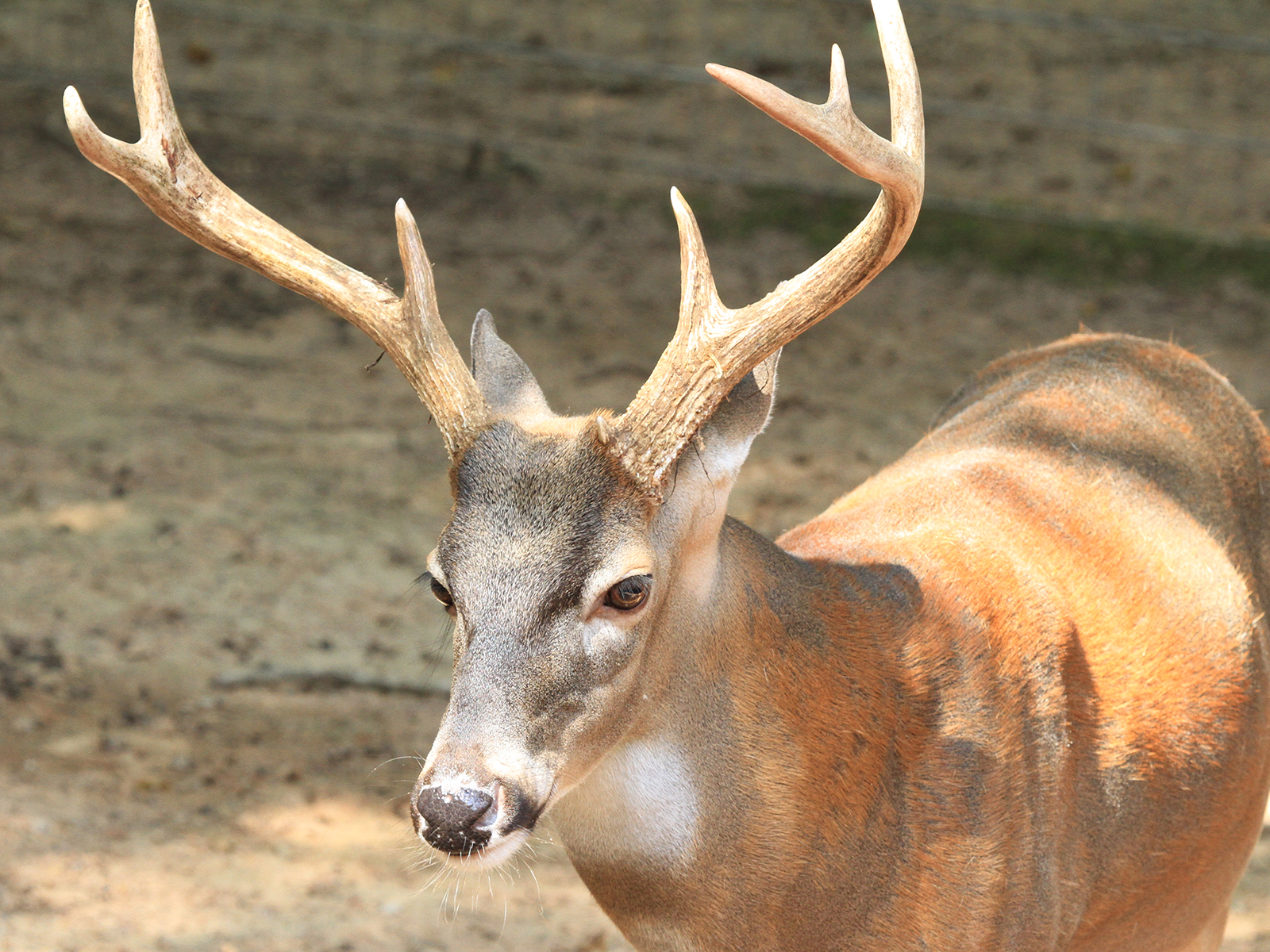
Males, called bucks, have antlers. A females is called a doe and does not grow antlers. Antler size is dependent on the food supply and age of the deer. Antlers start growing in April - May, and are shed annually during January.
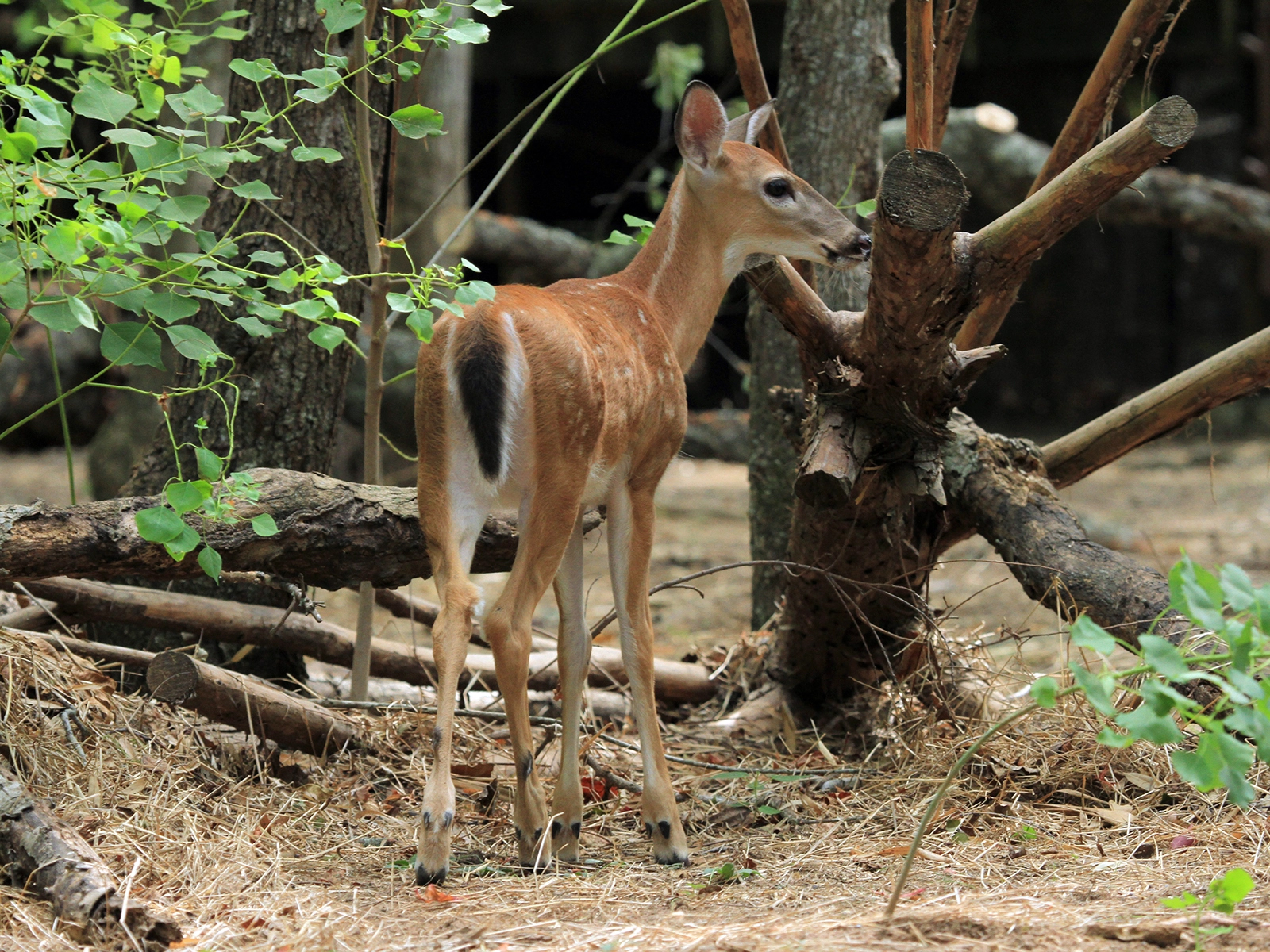
A baby white-tailed deer is called a fawn. Young are born in the spring or summer. Fawns are able to stand and nurse within minutes of birth. Fawns can walk a few hours after they are born, but remain quietly hidden in shrub waiting for their mother to return to feed them.
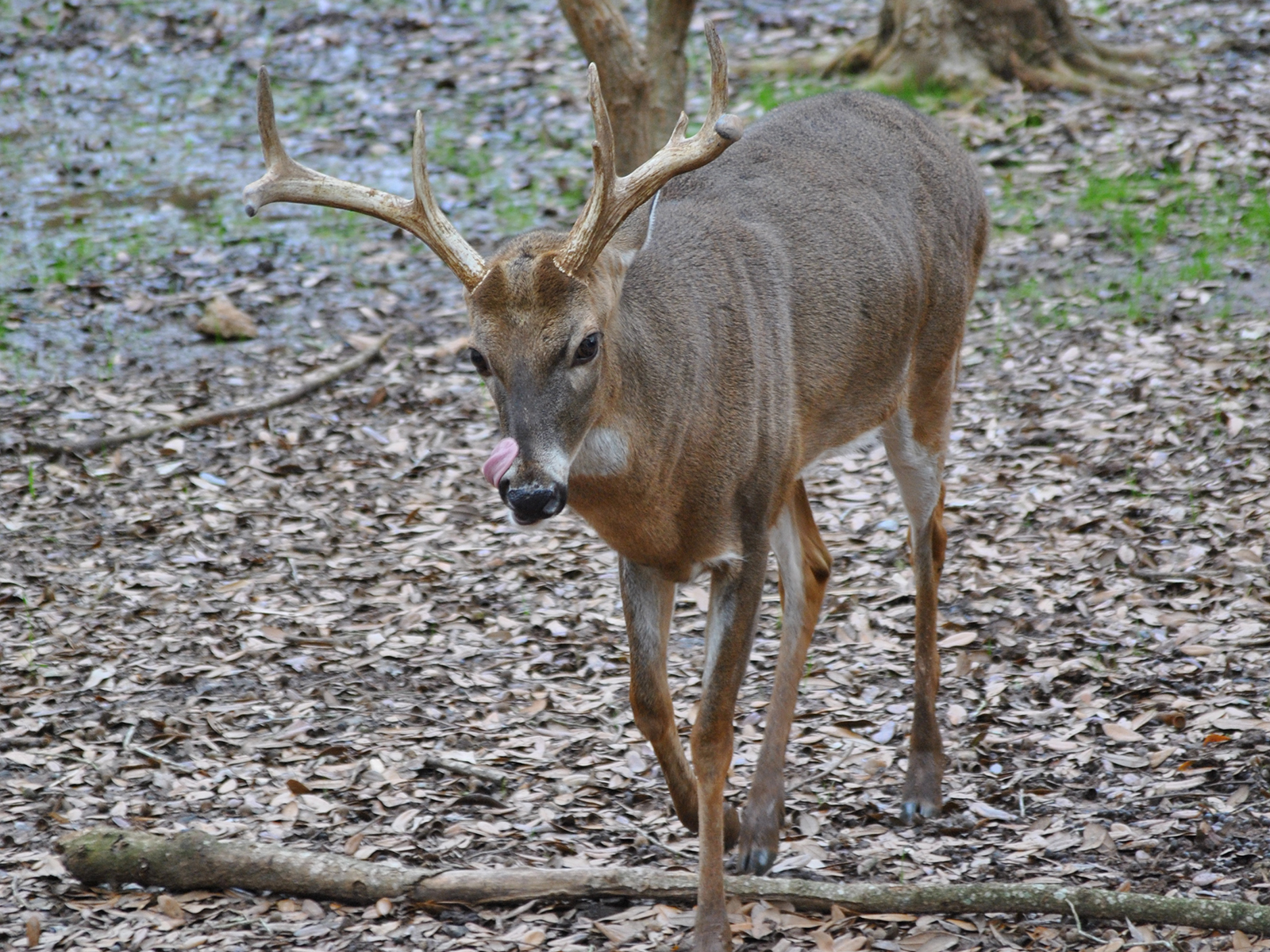
Reduce Deer-Vehicle Collisions. Be extra vigilant when driving, especially at dawn and dusk when deer are most active. Deer whistles are not proven to be effective. The most reliable way to prevent a collision is to slow down and stay alert.
A wild baby animal's best chance for survivial is with its mother. It is very common to see a fawn alone. The mother deer often leaves her young in a safe spot for hours at a time while she forages. Do not assume the fawn is abandoned. A mother's best defense is to hide her baby and stay away so her scent doesn't attract predators. The fawn is likely not abandoned unless it is crying, wandering aimlessly for an extended period, or has visible injuries.
